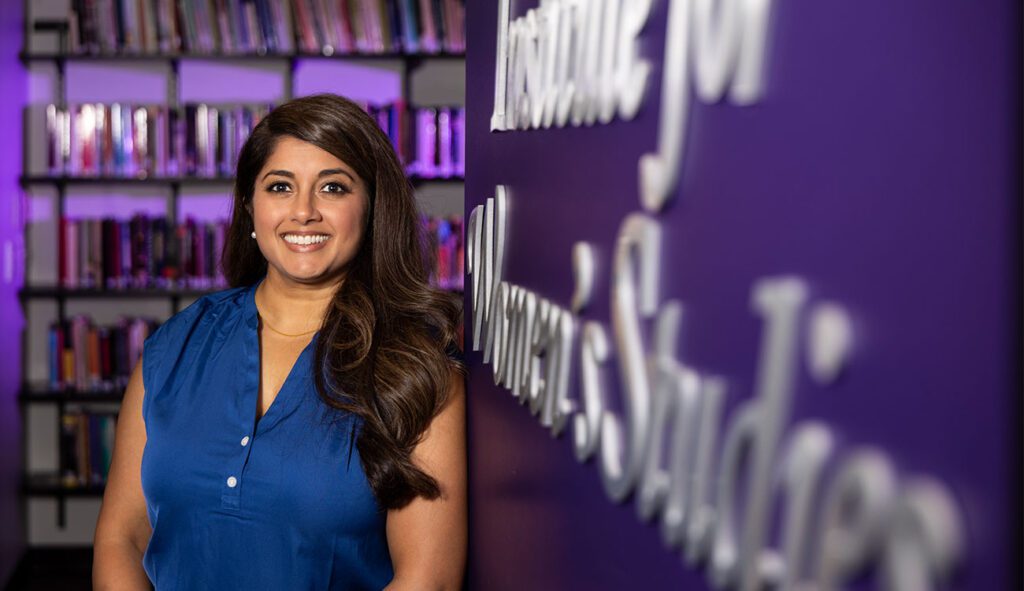The role of culture
Music and dance came naturally to Putcha. Growing up in Houston, she learned Euro-American performance styles in school. She sang in choir, learned viola, and remained musically active throughout her life, even working as a professional soprano during graduate school.
For many Indian American families like hers, however, the arts provided a way to pass down cultural identity that public school systems often didn’t reflect.
“There were very few public spaces where the Indian community could raise its young people to understand their culture,” Putcha said.
Many young women like Putcha were encouraged to learn dance up to a certain age as a means of cultural continuity. She described it as a “double life”—she embraced both the Indian performance art she learned in local after-school programs and the Euro-American styles she learned at school.
Putcha left Texas to study history and music at the University of Chicago, where her love of dance influenced her to study how Indian classical dance functions as a cultural and gendered practice—particularly for girls growing up in diaspora communities—for her bachelor’s thesis. She argued that these performances carry layered histories of migration, gender expectations, and cultural identity, even as they are presented as heritage activities.
“It carries within it a very specific history of gender and sexuality,” she said.

The topic became the subject of Putcha’s first book, “The Dancer’s Voice: Performance and Womanhood in Transnational India” (Duke University Press, 2023), which explores how the figure of the Indian dancing woman has become central to how Indian culture is perceived in transnational settings like the United States, United Kingdom, and Canada. Putcha argues that while the figure is used to symbolize national culture, it also enforces a foreclosed sense of self for Indian women.
“The central argument of the book is that separating the dancer’s voice from her body has been central to how citizenship operates for women,” she said. “Especially women who exist in spaces typified by a hyphenated identity.”
It’s a complex argument. Society often sees women, particularly dancers, as bodies first, not as individuals or musicians. Their physical performance is emphasized, but agency and musical knowledge often are ignored or silenced. This separation—valuing the body over the voice—plays a central role in how women, particularly those who face multiple layers of marginalization, are treated as citizens in terms of rights, recognition, and inclusion in society.
Nearing the end of her undergraduate studies, she planned to go to law school to study immigration and asylum law. However, after her professor and mentor George Chauncey read her thesis, he put her in contact with an anthropology professor who encouraged her to consider graduate school instead.
There, she blended her interests in music, culture, gender, and social theory in a field called “ethnomusicology.”

